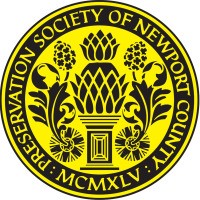Biographical note
The Vanderbilt Family
William K. Vanderbilt was born December 12, 1849 to William Henry Vanderbilt and Maria Louisa Kissam Vanderbilt. After working his way up through the New York Central Railroad from the position of clerk to the Office of the Treasurer, William K. Vanderbilt became the Director for several of the Vanderbilt Railroad lines. On April 20, 1875, William Kissam Vanderbilt married Alva Erskine Smith. Alva was the daughter of Murray Forbes Smith and Phoebe Ann Smith of Mobile, Alabama. The Vanderbilts had three children: Consuelo Vanderbilt, William Kissam Vanderbilt, Jr. and Harold Stirling Vanderbilt.
Consuelo was married to Charles Spencer-Churchill, Ninth Duke of Marlborough, in 1895, though that marriage was eventually annulled. After her divorce, in 1921, the former Duchess of Marlborough married Jacques Balsan, a Lieutenant Colonel in the French Air Army. William Kissam, Jr. was married twice—first to Miss Virginia Graham Fair and later to Miss Rosamund Lancaster Warburton. He became the president of the New York Central Railroad Company after his father’s death in 1920, and was known as a great lover of automobiles and yachts. Harold Stirling Vanderbilt also worked for the New York Central Railroad Company, serving as a director and executive committee member until 1954. In 1933, he was married to Miss Gertrude Lewis Conaway of Philadelphia. Harold is remembered best, however, for his participation in competitive yacht racing.
William and Alva Vanderbilt divorced in 1895. William K. Vanderbilt was then married to Anne Harriman Sands Rutherfurd, while Alva married Mr. Oliver Hazard Perry Belmont. Mrs. Alva Belmont then moved down Bellevue Avenue into Belmont’s home, Belcourt, closing Marble House temporarily. After Mr. O.H.P. Belmont’s death in 1908, Alva reopened Marble House and constructed the Chinese Tea House overlooking the Cliff Walk. It was here that she would host fundraisers and rallies for her political causes, primarily the campaign for Women’s Suffrage.
The Prince Family
Less than a year before her death, in August 1932, Alva Vanderbilt Belmont sold Marble House to Mr. and Mrs. Frederick H. Prince. Frederick Henry Prince was an investment banker and financier who served as the Chairman of the Board of the Union Stock Yard and the Transit Company of Chicago, as well as the Director of Armour & Co. In 1884, Prince was married to Abigail Kinsley Norman. The couple had two sons, Frederick Henry Prince, Jr. and Norman Prince, both of whom flew with the Lafayette Escadrille in World War I. Norman was killed in action in 1916. In addition to Marble House, Prince owned the Princemere Estate in Wenham, Massachusetts, as well as homes in Biarritz, Pau, Boston, and Aiken, South Carolina. Princemere is now home to Gordon College. Mr. Frederick H. Prince was a member of the New York Yacht Club, and competed in the America’s Cup trials with his yacht, Weetamoe, though he lost to Harold Vanderbilt and Rainbow. He was also an avid horseman and was one of the nine founding members of the National Steeplechase Association. In 1947 the Princes established the Prince Charitable Trusts, which is a benefactor to various philanthropic causes to this day.
The Gibson-Stokes Family
Margaret Annabella Gibson Stokes emigrated from the United Kingdom to the United States of America. She served as the personal secretary to Mrs. Frederick H. Prince at Marble House from 1935 to 1945, both before and after her marriage to Mr. Edward Stokes. Edward served under the 357th Fighter Group of the United States Army Air Forces during World War II.
William Gilmour
William Gilmour joined the Vanderbilt household at age sixteen, in 1881, and was employed as a companion to William K. Vanderbilt, Jr. In 1892 he took up the position of Superintendent of Marble House where he would serve for the next twenty-five years. Gilmour was responsible for all aspects of the property’s upkeep, and he lived there with his family when the home was not occupied by the Vanderbilts. He continued to manage the property even after Mrs. Belmont moved to Belcourt with her second husband, Mr. O.H.P. Belmont. Gilmour finally resigned in 1917, after 25 years of service to the family. After leaving Marble House, Gilmour hoped to purchase a small farm, but instead moved to upstate New York with his wife and ailing mother. While there, he assisted local farmers with their crops. Mr. Gilmour died in 1957.


